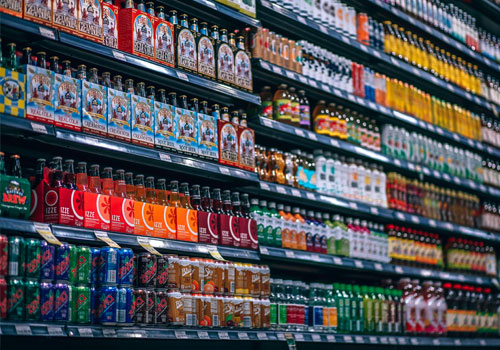Companies selling mass consumer goods and services such as juices, cosmetics, athletic shoes, and air travel establish a strong brand image by developing a superior product or service, ensuring its availability, and backing it with engaging communications and reliable performance.
Consumer purchases are generally made by individual decision makers or a decision-making unit, either for themselves or for others with whom they have relationships. The consumer market is made up of companies marketing consumer products and services as diverse as soft drinks (Red Bull), make-up (L’Oréal), air travel (AirFranceKLM), shoes (Clarks) and car insurance (the Automobile Association).

Consumer markets are enormous. Consumer purchasing power within the European Union has grown to the point where it is slightly larger than that of the United States. Germany, with a population of 82 million, is Europe’s largest consumer market with consumer purchasing power estimated to be €1495 billion, or 19.5 per cent of Europe’s €7681 billion. A pan-European study by MB-Research ranked the United Kingdom second with €1180 billion and France third with €1076 billion, followed by Italy (€943 billion) and Spain (€536 billion).
There has been much debate about the high consumption levels in Europe and how this generation is the one ‘born to consume’ or what has been called the ‘McLuxury Generation’. The champagne-growing region of Rheims in France has been expanded for the first time in over 80 years, as world consumption increased by 5 per cent in 2007, to a record 339 million bottles.
Consumers are smarter, they expect more, they approach purchase decisions with greater scrutiny and have access to more data for comparison. It is suggested that consumers are ‘self-indulgent, pleasure-seeking individualists, dominated by marketers and advertisers, and sheeplike in their mimicking of others’. . . with the new religion of worshipping at the cathedral of the shopping mall’!28 Alternatively consuming can be seen as a sign of love and affection as we purchase for others to show affection and affiliation.
In Tesco in the United Kingdom, the average number of product lines has exploded from 5000 in 1983 to over 40,000 in 2002. Only 20 years ago the average UK consumer could choose between three TV channels; now there are around 300 channels broadcasting to UK subscribers.
The café chain Coffee Republic offers 11 different types of coffee, four added toppings, three types of milk and sugar, three types of cup size – in all 6000 different ways to have a cup of coffee. A visit to any chemist will yield 14 different types of dental floss and over 20 different toothpastes. We live in a time of ‘choice explosion’.
Take the Internet. Customers can now log on to the Internet and choose from over 100,000 CDs rather than having to travel to a shop that can physically stock perhaps only 25,000 CDs. This changes choice, this changes distribution, this changes the service aspects and this changes the marketing programmes that marketers need to use. Information technology changes space–time–place relations; we have yet to grasp the scope of this disruption.
Take iTunes. As of January 2008, 50 million customers had downloaded over 4 billion songs since the service first launched in April 2003. This reflected an increase of 1 billion since July 2007 when there were 3 billion downloads. A new single-day record was set when 20 million songs were downloaded
on the 25 December 2007.

Comments
Post a Comment